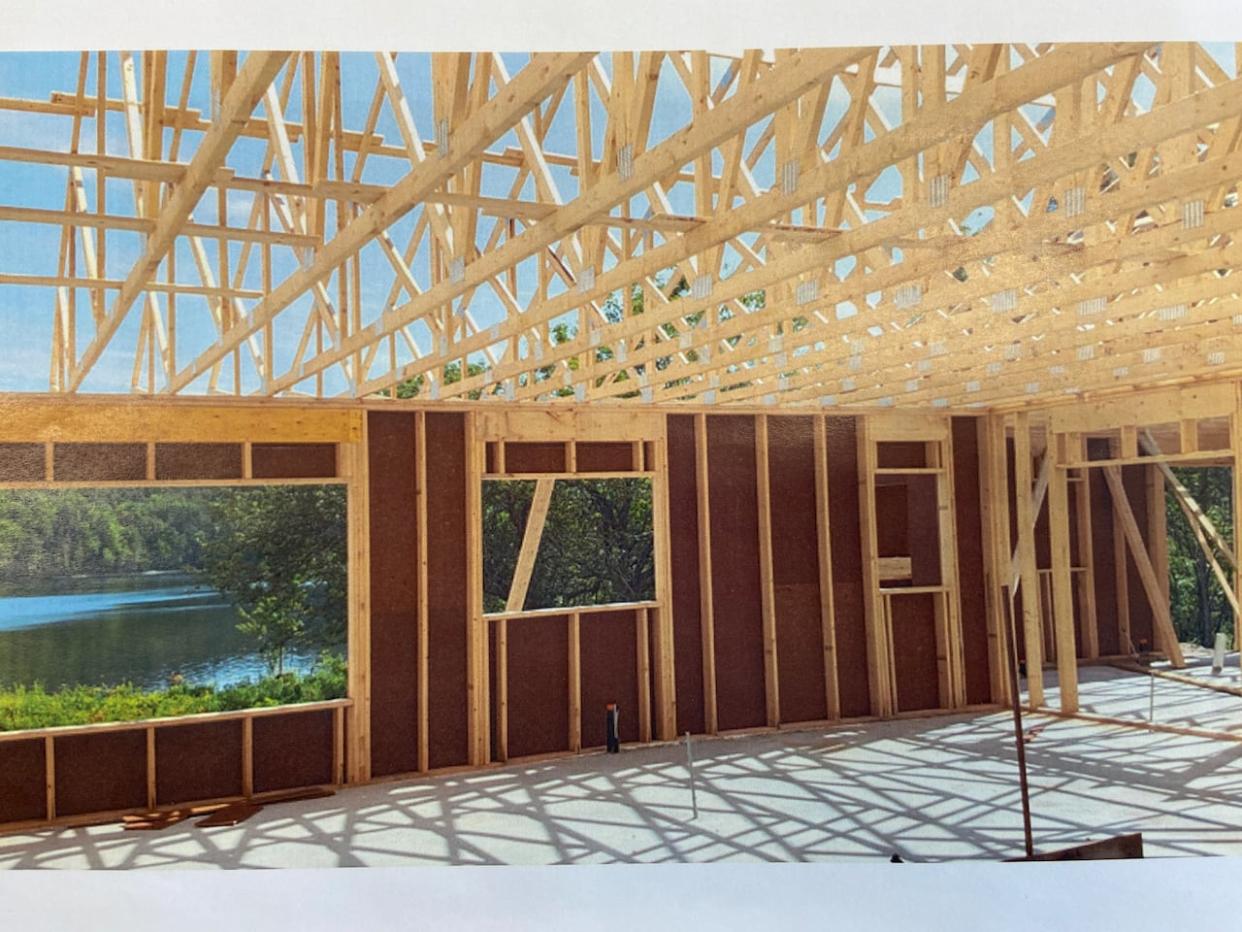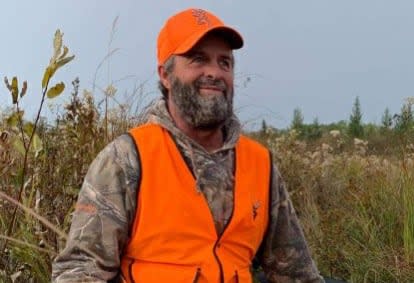Licensed carpenters should be required on N.B. job sites, inquest jury says

The jury in a coroner's inquest is recommending that all job sites be required to have a licensed carpenter present in the wake of a worker's death after falling from a truss in a partially constructed home.
Jurors in the coroner's inquest into Daniel Moore's death also recommended that roof trusses be assembled on the ground, whenever possible, and that the minimum height for requiring fall-stop equipment be lowered when work is being done over a concrete floor, but didn't specify what that height should be.
Moore, 59, was installing trusses on a house in Jewetts Mills, about 25 kilometres west of Fredericton, on July 5, 2021, when he fell and hit his head, suffering a traumatic brain injury. He died five days later.
Based on testimony heard on Wednesday, a crane was used to lift and set the trusses in place and then Moore walked along each truss to brace it to the previous one.

Daniel Moore died after falling from a bottom truss that was 2.8 metres above a concrete floor. (Sunbury Funeral Home)
Michel Cyr, manager of investigations with WorkSafeNB, testified that Moore knelt down to secure one of the wooden braces, when he fell and hit his head on the concrete floor below.
Cyr said Moore was working at a height of 2.8 metres, exempting him from needing to wear fall-stop equipment, which is only required for working at a height of at least three metres.
Other recommendations from the jury include:
All job sites should have one worker trained in first aid.
Building permits for new home construction must be attached to a licensed carpenter.
Members of the home builders association take refresher safety courses every one to two years.
Using two-by-four-inch lumber for bracing the bottom chords of trusses.
More random inspections by building inspectors.
The jury also deemed the manner of Moore's death as accidental.
No education requirements for carpenters: Cyr
The recommendations came about two hours after the jury heard from Cyr, who was recalled as the last witness Thursday morning to provide more testimony.
Some of that testimony focused on the regulation of carpentry as a trade in New Brunswick and the educational requirements to do such work, compared to other trades.

Carpentry is a trade that doesn't require any special education to work in that field, says Michel Cyr, manager of investigations for WorkSafeNB. (Aidan Cox/CBC)
While a carpenter may obtain a red seal designation, which Cyr described as the "gold standard" in trade qualification nationally, there's no requirement to have it or any other special training to work in that trade in New Brunswick.
Cyr showed jurors a Government of New Brunswick document detailing 12 trades that require special education in order to work in those fields, including electricians and automotive technicians. People working in those trades may also go beyond those qualifications, if they wish, to obtain their red seal designation.
Carpentry is not on that list.
"So in a nutshell, anyone can do construction in New Brunswick," Cyr said.
"Any one of us can … say 'I'm a general contractor and I'm going to start building houses,' and there are no requirements for training."
No witnesses said whether Moore was licensed to work as a carpenter in New Brunswick.
Cyr said Moore had built hundreds of homes throughout his career and was considered "competent," as defined in the Occupational Health and Safety Act, given his experience.
New hard hat regulations coming
Cyr and other witnesses who were at the site when Moore fell also testified he was not wearing a hard hat when he fell.
Moore was required to wear a hard hat with the work he was doing, Cyr said, but added that construction workers often don't wear one when they're doing certain work.
"If you've ever worn a hard hat, it's not the most stable thing to wear and we will regularly hear in construction that if you are installing trusses, it falls off," Cyr said.
To address that, Cyr said WorkSafeNB is proposing changes to the regulations under the Occupational Health and Safety Act that would require workers to wear a chinstrap with their hard hat when carrying out certain tasks.
Cyr said that amendment to the regulations will be going up for public review "any day now."
Truss-work linked to 3 other investigations
Moore's case is part of a trend in the types of accidents happening in the residential construction field, Cyr said.
He said WorkSafe is currently investigating three other incidents of workers getting injured after falling from trusses — and those only include incidents that resulted in serious injury.
"Unfortunately, it's one of these common investigations we do in residential construction," he said.
"Injuries are significant. When we talk about trusses we're looking at spinal fracture, pelvic, arms, legs, skull [injuries]."
Cyr told jurors there are a handful of tools and practices that can be used to install trusses that don't involve workers walking along them.

A coroner's inquest into the death of Daniel Moore was held Marysville Place in Fredericton this week. (Aidan Cox/CBC)
Those include using scaffolding, articulated booms, scissor lifts, or a technique that involves constructing the truss system on the ground and then lifting it onto the frame of the house using a crane.
"There is absolutely no need for anyone to be walking on trusses in New Brunswick," Cyr said.
Presiding coroner Sarah Barnett said the jury's recommendations will be forwarded to the appropriate agencies, which will have about six months to offer a response.
Those responses, along with the recommendations, will be included in the chief coroner's annual report for 2023, she said.

